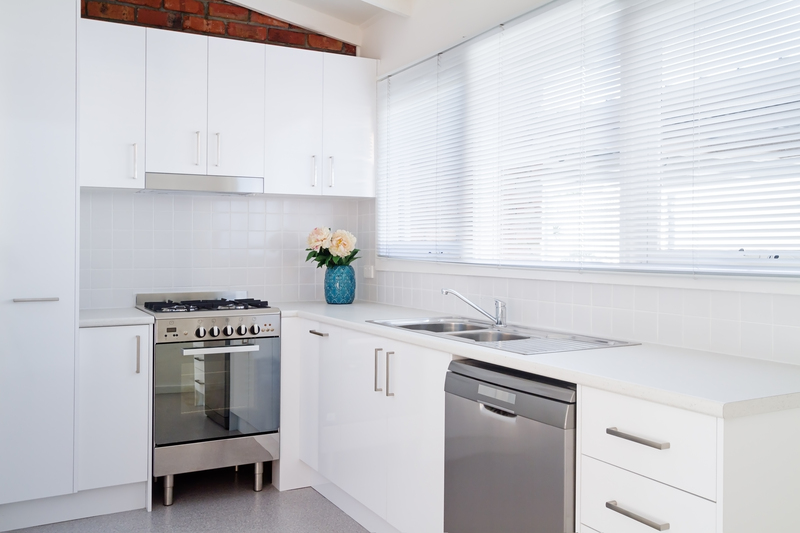Why Pianos Are So Difficult to Move and How Pros Handle the Challenge
Have you ever wondered why moving a piano is known as one of the most challenging tasks in the world of relocation? If you've ever looked at the immense structure of a piano and pondered its complexity, you're not alone. Thousands of people face the daunting task of relocating these majestic musical instruments every year. From legendary concert grands to family upright pianos, each presents unique challenges that demand careful handling and specialized know-how. In this comprehensive article, we'll explore why moving pianos is so difficult, the specific hurdles involved, and the smart solutions employed by professional piano movers to ensure a successful and safe relocation.

Understanding Why Piano Moving Is So Difficult
The Size and Weight of Pianos
The first and most obvious reason behind the challenge of moving a piano lies in their sheer size and weight. Pianos are among the heaviest household items, with a wide range of models varying significantly:
- Grand Pianos: These can weigh anywhere from 500 to 1,200 pounds (225-545 kg) or more, with concert grands being the heaviest and largest, spanning up to 9 feet (2.7 meters) in length.
- Upright Pianos: Generally weigh between 300 and 800 pounds (135-360 kg), depending on their height and construction quality.
- Spinets and Console Pianos: The smallest upright pianos, still substantial at 200 to 400 pounds (90-180 kg).
This significant mass not only makes lifting and maneuvering incredibly difficult, but it also poses severe risk of injury if performed improperly.
Unique Shapes and Structural Vulnerabilities
Unlike most furniture or appliances, pianos have an irregular shape, making them awkward to grip and maneuver around corners and through doorways. The legs of grand pianos are particularly fragile, and the mechanism inside is even more so.
Key points to consider:
- Delicate internal components: The average piano contains over 10,000 moving parts. The fine wooden soundboard, hammers, and strings are all susceptible to damage by jarring movements.
- Heavy yet fragile: A combination of iron, wood, and felt puts pianos in the unusual category of being both exceptionally heavy and astonishingly fragile.
- Finish damage: High-gloss and antique finishes are easily scratched, chipped, or stained if not handled with the utmost care.
Logistical and Spatial Challenges
Moving a piano isn't just a matter of brute strength. Spatial limitations in homes, buildings, and staircases can dramatically complicate the process. Professional piano movers routinely face:
- Narrow hallways and door frames
- Steep staircases, particularly with sharp turns
- Elevators that are too small to accommodate a piano's length or width
- Outdoor steps and uneven terrain
Each of these factors requires intricate planning and, sometimes, creative solutions. Even a small misjudgment can lead to significant property damage or personal injury.
Common Risks Involved in Moving a Piano Yourself
The Dangers of DIY Piano Moving
It's tempting to think that a few strong friends and some straps can substitute for hiring professional piano movers. However, attempting to move a piano yourself comes with serious risks:
- Injury: Back strain, muscle tears, crushed fingers and toes, and hernias are common injuries among untrained movers.
- Instrument damage: Dropping or tilting the piano can rupture the soundboard, detune or snap strings, and permanently distort the frame or legs.
- Home damage: Walls, floors, doorways, and banisters often bear the brunt of failed piano moves, leading to costly repairs.
- Loss of resale value: Even minor scratches or internal harm can dramatically decrease a piano's market value or performance quality.
Remember, the cost of hiring experts is often dwarfed by the expense of repairs or restorations should an accident occur.
How Professional Piano Movers Handle the Challenge
Specialized Training and Experience
Professional piano movers receive intensive training in both mechanical technique and instrument care. They don't just learn to lift heavy objects - they acquire a deep understanding of:
- Instrument anatomy: Knowing which parts are strongest, where to grip safely, and which components are especially vulnerable to stress.
- Proper lifting and maneuvering methods: Using their bodies efficiently to prevent injury or fatigue.
- Rapid problem-solving: Adapting to challenging environments and unexpected hurdles.
Special Equipment Designed for Piano Relocation
Moving a piano successfully demands professional-grade moving equipment, including:
- Piano dollies: Heavy-duty wheeled platforms built to support enormous weight while gliding smoothly across flat surfaces.
- Piano boards: Thick, padded boards onto which grand pianos are tilted and tightly secured for easier handling.
- Straps and harnesses: Specially designed to distribute weight evenly and prevent slippage during lifting and transport.
- Padding and blankets: Used to protect the delicate finish and prevent scratches, chips, or dents.
- Ramps and skid boards: For safely navigating stairs, steps, or uneven ground without lifting the full weight of the instrument.
With the right tools and protection, professionals can minimize any risk of damage.
Detailed Planning and Precise Execution
Every piano move starts long before the actual lifting begins. Here's how the pros approach the process:
- Site Assessment: They evaluate the pickup and destination locations to identify obstacles, measure doorways, staircases, and elevators, and plan the optimal route.
- Piano Preparation: Before any move, movers wrap the piano in heavy-duty padding, lock the keyboard lid, and in some cases, remove legs, pedals, or music stands for grand pianos.
- Manpower Coordination: Piano moves require careful teamwork, with each team member given a specific role in lifting, steering, and stabilizing the instrument.
- Safe Transport: The piano is securely loaded into a vehicle designed for heavy objects, often with soft suspension to prevent jolts and protect the internal mechanisms.
- Delivery and Reassembly: Upon arrival, each part is carefully reattached, and the piano is placed exactly where desired. Some companies offer tuning services post-move, ensuring the instrument is performance-ready.
What Sets Professional Piano Movers Apart?
Insurance and Peace of Mind
Reputable piano moving companies carry comprehensive insurance that covers any accidental damage to the instrument or property. This offers invaluable peace of mind compared to DIY arrangements, where any mishap can become a significant financial burden.
Custom Solutions for Unique Situations
- Disassembly and Reassembly: For tight staircases or narrow doors, pros can partially disassemble a grand piano or remove certain components from uprights, then expertly reassemble them.
- Crane Service: When interior routes are impossible, skilled movers use cranes or hoists to lift pianos through windows, balconies, or across challenging terrain.
- Climate-Controlled Transport: To prevent wood warping or other climatic damage, pros use climate-controlled trucks for long-distance or interstate moves.
Expert Tips for a Successful Piano Move
If You Must Move a Piano Yourself
If you're considering a DIY approach, consider these critical safety guidelines:
- Gather Adequate Help: Never attempt to move a piano with fewer than 3-4 strong, able-bodied people.
- Rent Proper Equipment: At a minimum, use a piano dolly and heavy-duty straps.
- Protect the Instrument: Wrap meticulously with thick moving blankets and secure all loose parts.
- Plan Your Route: Measure doorways, turns, and floors ahead of time. Remove obstacles and create sufficient space.
- Use Personal Protective Gear: Wear gloves and sturdy shoes with slip-resistant soles.
- Go Slow: Never rush around corners or down stairs. Take your time and communicate constantly with your team.
- Re-Tune After the Move: Pianos will always need a professional tuning after being relocated.
Warning: If your piano is a valuable antique, concert, or baby grand, don't take the risk--hire specialists for the job!
Preparation for Moving Day
- Clear a Path: Remove rugs, furniture, and decorative items from the piano's route.
- Notify Movers of Obstacles: Advise them about any tight corners, steps, or tricky entryways.
- Plan for Parking: Ensure there's a place for the moving truck close to the entrance.
- Protect the New Location: Use floor runners or thick blankets to prevent scuffing or dents.

Frequently Asked Questions about Moving Pianos
How Much Does Professional Piano Moving Cost?
Piano moving costs vary depending on size, distance, number of stairs, and required services, but generally range from $150 to $800 for local moves and $500 to $2,500 for long-distance or challenging relocations. This is a wise investment compared to the potential losses of DIY mishaps.
How Long Does It Take to Move a Piano?
A local upright piano move may take 1-2 hours. Grand pianos or longer, higher-risk moves may require up to 3-5 hours or more. Additional time is needed for securing, padding, and reassembly.
Can You Move a Piano with Just a Furniture Dolly?
No. Furniture dollies are not designed for the concentrated weight and delicate balance of pianos. Always use proper piano-specific equipment to avoid damaging the instrument or injuring yourself.
Why Should You Tune a Piano After Moving?
The vibration and physical movement of piano relocation affects tuning stability and can even slightly shift the soundboard. For best performance, have a professional piano tuner service the instrument after it has acclimated in its new environment for a week.
Is It Ever Safe to Move a Piano Up or Down Stairs?
Staircases are the greatest hazard in any piano move. Unless it's a short, straight staircase with multiple helpers and proper equipment, leave this to professionals.
Conclusion: Leave Piano Moving to the Experts
Piano moving is an art, not just a labor. The unique challenges of weight, shape, fragility, and logistics make it one of the most difficult aspects of relocating valuables. While it may seem like a cost-saving idea to move a piano yourself, the risks to your instrument, your property, and your personal safety can far outweigh the potential savings.
Professional piano movers use their specialized training, equipment, and insurance-backed services to guarantee safe, damage-free transport. Whether your piano represents a cherished family heirloom, an expensive investment, or simply a beloved musical companion, it's worth trusting the experts when it comes time to move.
If you're preparing for a piano move, choose a reputable piano moving company, ask about their experience and insurance, and relax knowing your treasured instrument is in the best possible hands.
Now you understand why moving pianos is NOT a DIY job!



